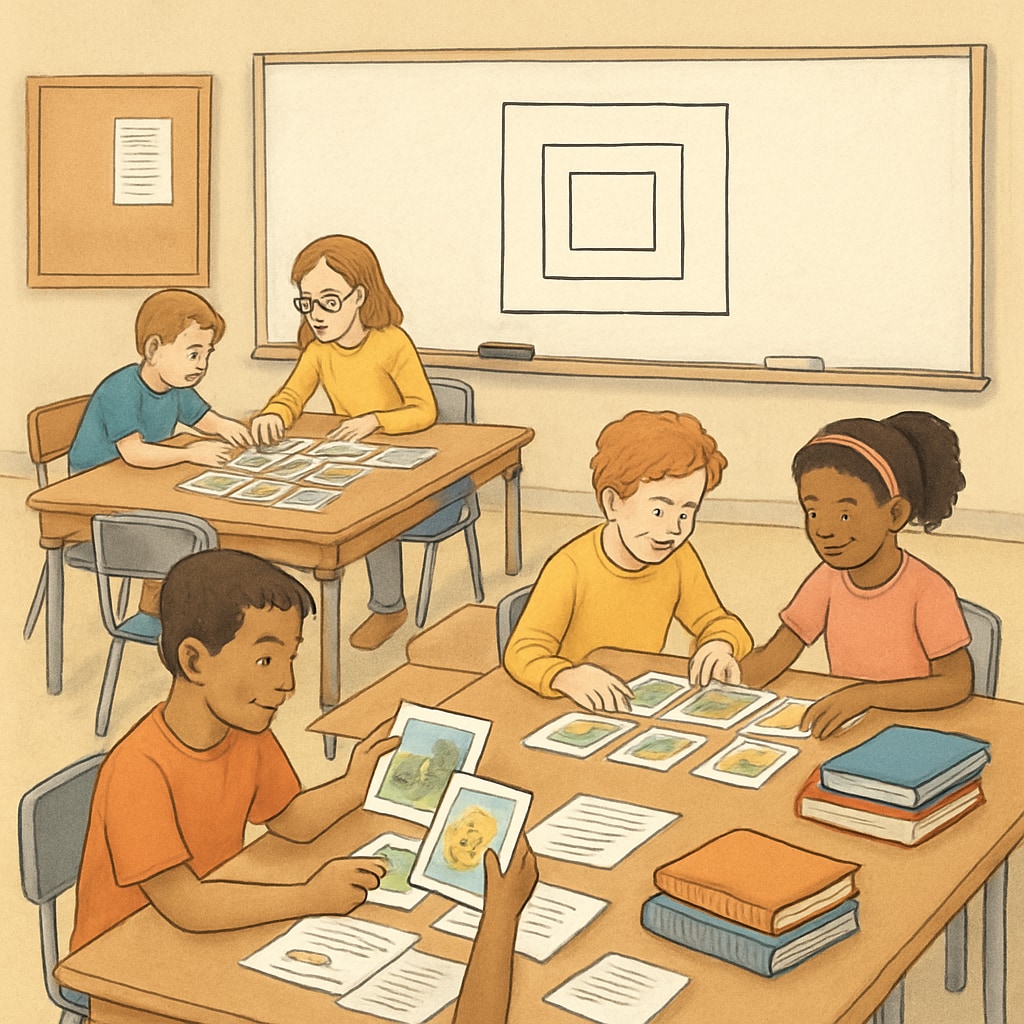Zoom/ReZoom activities, teaching materials, and sequence guides can be powerful tools for enhancing classroom interaction and engagement. These activities, which rely on storytelling and teamwork, have gained popularity in K12 education for their ability to promote critical thinking, collaboration, and creativity. However, many educators struggle with maintaining the correct sequence, causing confusion and reducing the activities’ effectiveness. This article provides a comprehensive guide to restructuring these activities for optimal results, ensuring teachers can leverage their full potential.
Understanding Zoom/ReZoom Activities
Zoom/ReZoom activities are interactive exercises based on the books “Zoom” and “ReZoom” by Istvan Banyai. These books feature a series of interconnected images that zoom in or out progressively, creating a narrative that challenges students to think critically and connect ideas. Educators use these activities to foster collaboration, as students must work together to reconstruct the story’s sequence.
Despite their benefits, implementing these activities can be challenging due to sequencing issues. If students fail to organize the images correctly, the intended narrative and learning outcomes may be lost. Therefore, understanding how to structure these activities is essential for success.

Why Sequence Matters in Zoom/ReZoom Activities
The sequence in Zoom/ReZoom activities is crucial because it directly impacts the flow and clarity of the story. A well-organized sequence allows students to explore perspectives, identify patterns, and build logical connections. Conversely, a disorganized sequence can lead to frustration and diminish the educational value of the activity.
Here are some common challenges teachers face regarding sequence:
- Students struggle to grasp the concept of zooming in or out.
- Groups fail to communicate effectively, leading to sequencing errors.
- Time constraints prevent thorough discussion and analysis.
To address these issues, educators need a clear sequence guide that outlines steps for preparation, execution, and reflection.
A Step-by-Step Sequence Guide for Teachers
Follow this structured guide to implement Zoom/ReZoom activities effectively:
- Preparation: Begin by familiarizing yourself with the books and selecting images that align with your lesson goals. Print and laminate the images for durability.
- Introduction: Explain the concept of zooming and the activity’s objectives to your students. Emphasize the importance of teamwork and clear communication.
- Organization: Divide students into small groups and distribute the images randomly. Encourage groups to analyze their images and discuss possible connections.
- Reconstruction: Guide students as they attempt to sequence the images correctly. Provide hints if necessary but allow them to problem-solve independently.
- Reflection: After completing the sequence, hold a class discussion to review the narrative. Ask students to share their thought processes and insights.

Practical Tips for Educators
Here are additional tips to enhance your Zoom/ReZoom activities:
- Customize: Adapt the images to suit different age groups or subjects. For example, use historical images for history lessons or scientific illustrations for STEM classes.
- Time Management: Allocate sufficient time for each phase of the activity to avoid rushing students.
- Encourage Creativity: Ask students to create their own Zoom/ReZoom stories as a follow-up activity.
- Assess Progress: Use rubrics to evaluate teamwork, sequencing skills, and critical thinking.
The Impact of Structured Zoom/ReZoom Activities
When implemented correctly, Zoom/ReZoom activities can transform classrooms into dynamic spaces where students actively engage with learning materials. These activities promote essential skills such as problem-solving, collaboration, and creativity, making them a valuable addition to any teacher’s toolkit.
In addition, they encourage students to think beyond the obvious and explore different perspectives, which is vital for developing higher-order thinking skills. By following the sequence guide outlined in this article, educators can overcome common challenges and unlock the full potential of Zoom/ReZoom activities in their classrooms.
Readability guidance: Use concise paragraphs, lists, and clear transitions to ensure accessibility. Incorporate active voice and avoid excessive jargon to maintain a professional yet approachable tone.


